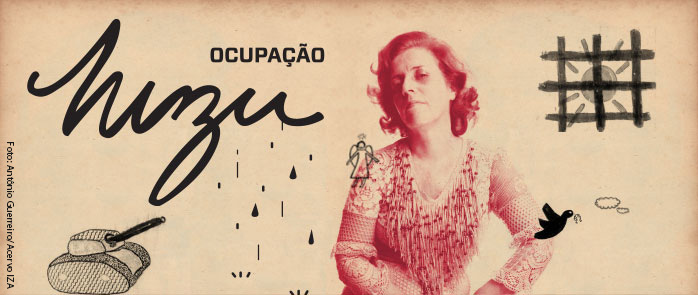
| PRESS KIT |
||
| At Itaú Cultural, Ocupação Zuzu presents an extensive overview of the life and work of one of the most exceptional women in the history of Brazil. |
|
My mother spent the last years of her life gathering fragments of the memory of my brother Stuart, as if she wanted to reassemble the body that she could not find to bury. These included his blond baby curl found inside an old church hymnbook, his letter written when he was a child and addressed "to the best mother in the world", the 1958 World Cup banner, the collection of whistles that imitate birdcalls, the sandals in which he walked for the first time, the aqua shirt - the only item of clothing he left behind - and the even prosaic chamber pot he used when he broke his leg and was bedridden. Head, torso, symbolic members for the mater dolorosa, unable to hold the body of her son in her arms, who would even compare him to Jesus in her moments of despair. Nowadays, looking at my mother’s dresses hanging on the displays, some of them sixty years old, but ironed, all spiffy and looking young, ready for their moment of glory at Itaú Cultural’s Ocupação Zuzu, I ask myself, dumbfounded: “How did I manage to keep, preserve and collect all this?”. They are only part of a much larger collection that includes other clothes, pieces, patterns, fabric samples, labels, undone dresses, scribbles, buttons, buckles, scissors, invoices, documents, wrapping, newspaper clippings, letters, pieces of paper, photos, negatives, the entire world of a seamstress' studio, family life, remnants, all of which seem to wish to become not a collection, but my mother herself. As a family predestination, I realize that I am repeating my mother’s attempts at recomposing her son… I received a lot of help in this painstaking work of archeology. The collective effort began with the seamstresses themselves. Armed with mother’s telephone contacts, I called every single one of her clients. Others answered the appeal I made in a newspaper column and knocked on my door, carrying the clothes in their arms. In Belo Horizonte, family members had kept the items in old trunks. When someone saw something by her in a secondhand store, they would either buy and give it to me as a gift, or run to call me to let me know. Photographers also donated precious negatives. Everyone joined the mission. It was a true action of militants, a political activity. Since it started during the dictatorship years, the Zuzu Angel Collection we have today embodies the subtle meaning of a large and wide gesture of political resistance, a clear protest by its donors against those dark years. By means of their donations, everyone seemed to want to express not only their appreciation and admiration for the legitimacy of Zuzu Angel’s pioneering and unique Brazilian fashion, but also their desire to join the legion of insurgent “angels” against that period of oppression that Brazil experienced. |
| BACK |
